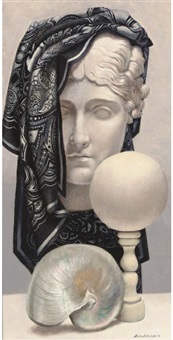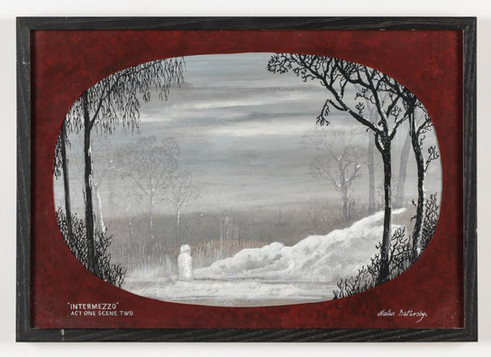Martin Battersby - Muses & the Beau Monde
- Lilium
- Jan 24, 2024
- 2 min read

George Martin Battersby, born 12 February 1914, was a British trompe-l'œil artist and theatrical set decorator who became an expert on Art Nouveau and the style of the 1920s and 1930s.

Born in London, his father was a retail jeweller, Martin was drawn to the visual arts and he first trained as a draughtsman at Gill & Reigate. Later, he worked at Liberty's while he studied acting at RADA. His stage career was eclipsed by an interest in set design and painting, receiving his first commission for an Old Vic production of Hamlet with Laurence Olivier in 1937. This was followed by commissions for the Royal Shakespeare Company at Stratford. A 1956 profile in The Sketch has a page portrait by Hans Wild. The writer states: "Battersby assured me that he has never in his life attended an art school, or even had any art lessons. He is entirely self-taught."
His career as an artist developed in parallel with other activities and he held his first one-man show in 1948 at the Brook Street Gallery, London. Shows on both sides of the Atlantic followed. He became a master of the trompe-l'œil form and his work often reflected his obsessions with theatrical masks and sphinxes.
Battersby also produced easel paintings and large scale murals and enjoyed the support of a wide group of patrons in the 1950s and 1960s. His first mural commission was from Lady Diana Duff Cooper in 1950, and other patrons included Audrey Pleydell-Bouverie, the Countess of Kenmare, Denis Martineau (for whom Battersby did seven panels at Mompesson House), Evelyn Waugh and for John Profumo, as a present for his wife, Valerie Hobson.
Battersby continued to expand his experience by working in the antiques trade and buying for his own eclectic collection. In the 1940s he worked for a short time as assistant set designer to Cecil Beaton and worked on the 1945 production of Lady Windermere's Fan. He later fell out with Beaton, as he did with other collaborators.

From the 1960s onwards he began to develop his reputation as a collector, connoisseur and historian of the visual arts, decorating his home in Brighton in a typically lavish and eclectic way. He ran a boutique and printing studio named Sphinx Studio and in 1969, at the instigation of John Morley, his collection formed the basis for one of the first retrospectives, an exhibition of 1920s style The Jazz Age. The exhibition was opened by designer Erté.
In 1971, Battersby's partner, Paul Watson, committed suicide. In 1978, Battersby severed links with Brighton and his former interests, and moved to Fulham, London, where he continued to paint in preparation for a new exhibition that was to be held in 1982. He died, however, before the exhibition began in Lewes, 3 April 1982, aged 68. He published six books during his life time: The World of Art Nouveau, 1966, Art Nouveau 1969, The Decorative Twenties 1969, The Decorative Thirties 1971, Art Deco Fashion, 1974 and Trompe-l'œil 1974.
Reading Recommendations & Content Considerations
Martin Battersby Martin Battersby










































































































































Comments